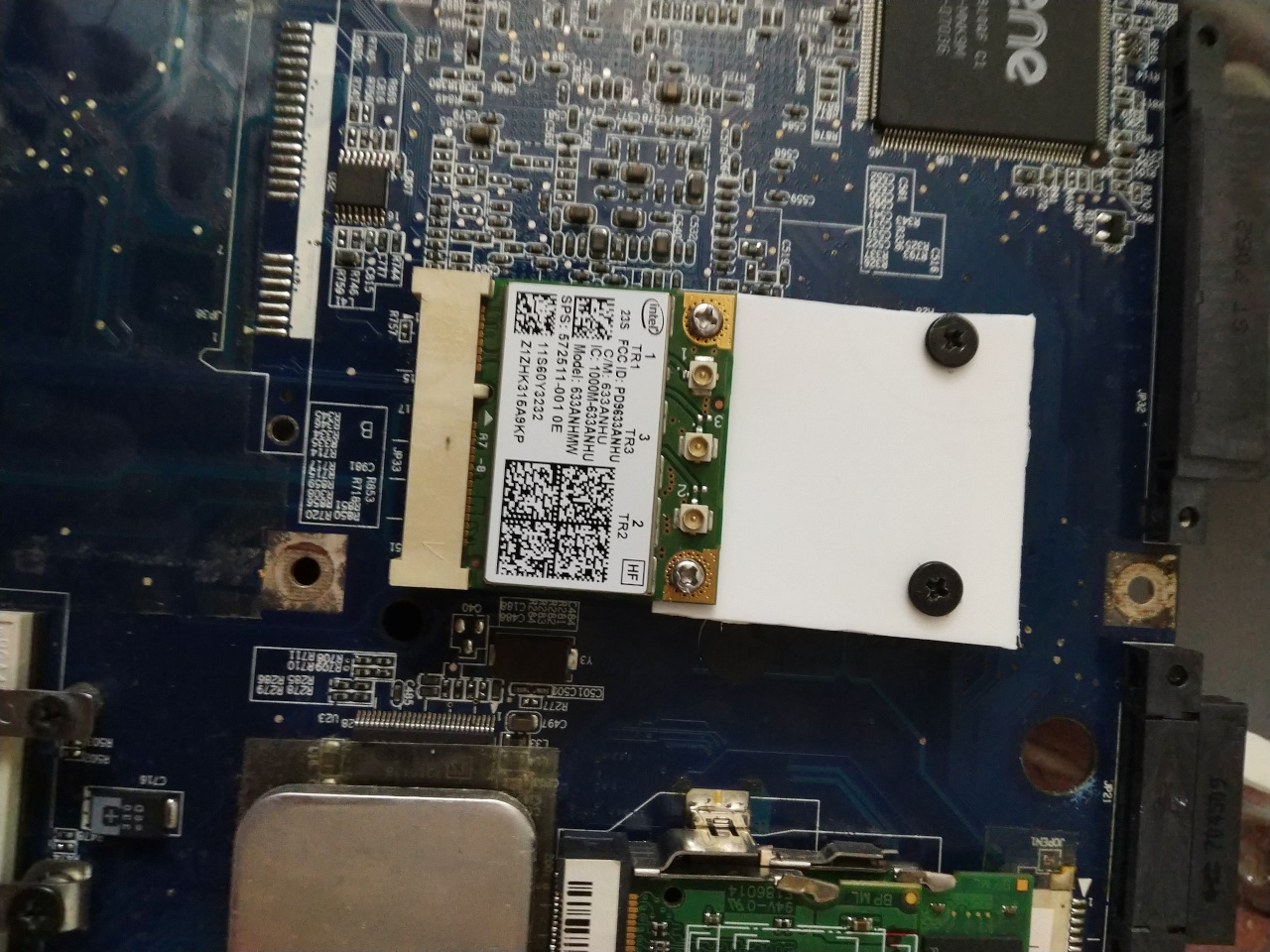Fumbling Around with a WiFi Card
By Prithvi Vishak
Created June 9th, 2021
You might remember reading the article about the home-refurbished Toshiba laptop, called the PAC. Anyway, we agreed that we would pass it around each other's houses a couple times a year so that everyone gets to keep and use it (I suppose users getting time slots on a computer never gets old), and that we could use it for whatever we wanted.
The other day, I found the WiFi card I had salvaged from an old ThinkPad. It used the PCIe minicard form-factor (One of them, at least. An opportune moment for an xkcd comic.) that the PAC happened to use as well. The Toshiba Satellite A135 the PAC is built from is from 2008. It had some Qualcomm Atheros chipset (Toshiba-branded, a fact whose relevance will soon become apparent) that supported only 802.11bg.
That ThinkPad was from 2011, and it happened to have an Intel Centrino Ultimate-N 6300, supporting, well, 802.11n. Yay! All I had to do now was remove the old card, and slot the new one in, right?
Wrong.
They were different lengths, and there wasn't a screw hole for the shorter length. Well, nothing an old cream cheese tub and soldering iron couldn't fix (the soldering iron was to burn the holes).

So this must be how they make things fit at NASA
Now for the software side of things. When I logged into the Xfce desktop, I'd usually see WiFi connect almost immediately. This time it didn't. Okay.
~$ lspci -v
...
03:00.0 Network controller [0280]: Intel Corporation Centrino Ultimate-N 6300 [8086:422b] (rev 3e)
Subsystem: Intel Corporation Centrino Ultimate-N 6300 3x3 AGN [8086:1101]
Flags: bus master, fast devsel, latency 0, IRQ 53
Memory at f0200000 (64-bit, non-prefetchable) [size=8K]
Capabilities:
Kernel driver in use: iwlwifi
Kernel modules: iwlwifi
...
Yay! It recognizes it, and has a driver and everything. I was worried it had one of those Broadcom chipsets that are supposedly super unreliable and need a proprietary driver. All I had to do now was maybe configure a new network connection.
Wrong.
It wouldn't even show up in NetworkManager. Great. To StackExchange.
~$ sudo rfkill list all
0: phy0: Wireless LAN
Soft blocked: no
Hard blocked: yes
Okay. That's something. The motherboard has a little wireless kill switch on it. Unfortunately, manipulating that didn't have much effect.
~$ sudo modprobe iwlwifi nohwcrypt=1
No amount of modprobeing and rebooting helped. The only option I fiddled with was hwcrypt, which enabled/disabled hardware encryption.
No luck, though in hindsight, I probably should have tried some other options (which I will one day). <Angry kernel sounds>
By that time, I was frustrated and tired, and didn't want to dig any further. I put the old card back in, and reassembled the box (of course forgetting to screw the motherboard in). I attributed the blocking of the Intel card to the BIOS being locked to the one put in by Toshiba. The preinstalled card was Toshiba-branded anyway.
Upon further reading, I found that Lenovo and HP do exactly this. I haven't found any mention of Toshiba doing this, though, so I am probably just missing something. I'll try more modprobeing another day, and edit this article accordingly.
Anyway, I put the Intel card back into the box I fished it out of and thought about other things (like the homework I had to do by the next day).
Why did I write about this? Maybe to guide someone to that StackExchange page if they were having the same problem? I don't know. I'm sorry if this didn't help you. I guess I did it because I wanted to document it, or to paraphrase The Big Bang Theory, because I can.